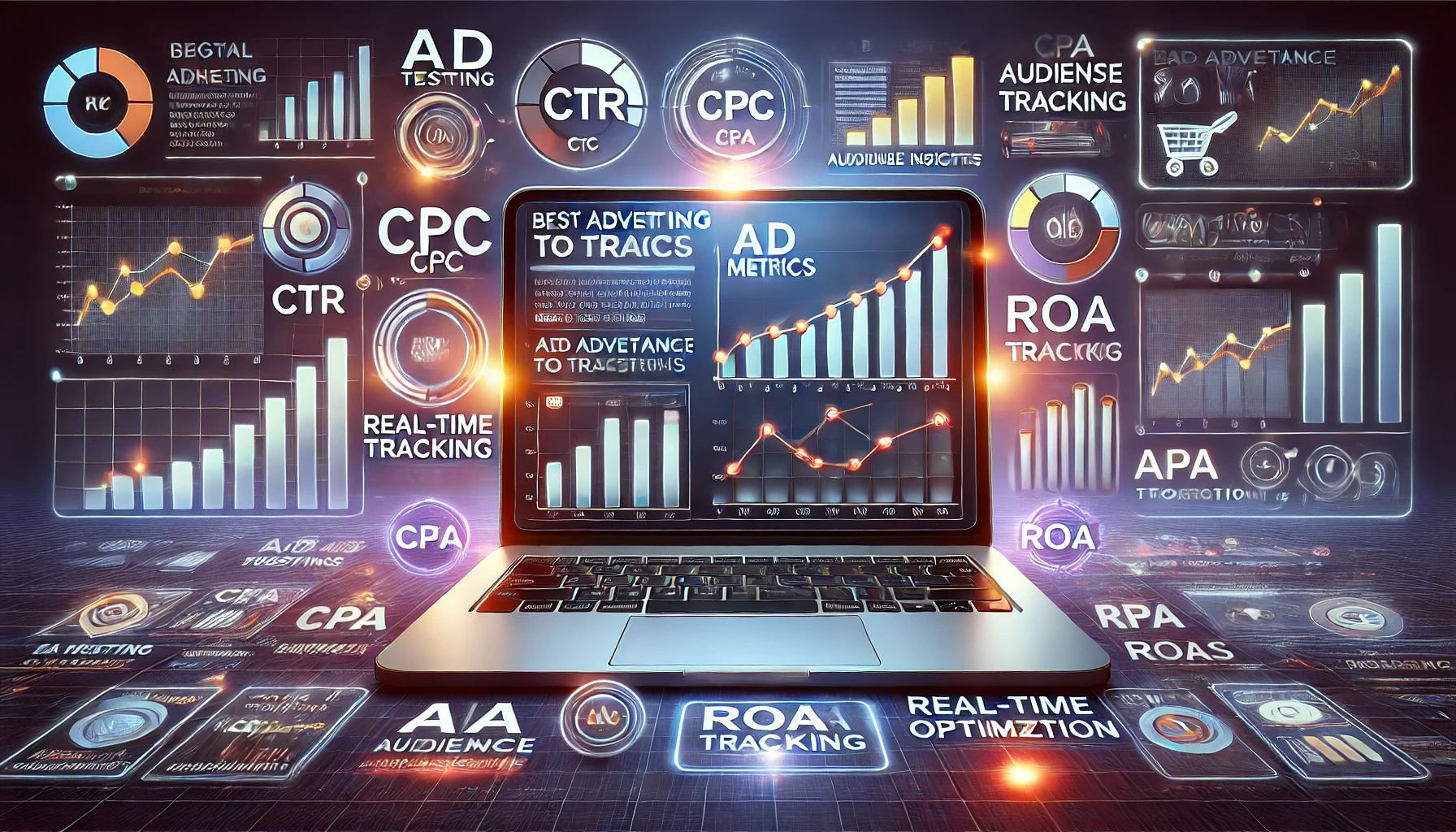Running ads without tracking the right metrics is like driving blindfolded—you’ll waste money and struggle to improve performance. The best advertisers focus on data to optimize campaigns, lower costs, and increase ROI.
In this guide, you’ll learn which advertising metrics matter most, how to track them, and how to use data to improve your ad performance.
1. Why Tracking the Right Advertising Metrics is Essential
Many advertisers focus only on vanity metrics like impressions and likes, but these don’t directly impact profitability. The key is to track performance-based metrics that measure real business growth.
The Benefits of Tracking Key Advertising Metrics
– Identify Winning Campaigns – Scale successful ads and cut underperformers.
– Lower Ad Costs – Improve efficiency by focusing on high-ROI campaigns.
– Optimize Targeting – Adjust audience segments based on real conversion data.
– Increase Profitability – Track return on ad spend (ROAS) to maximize revenue.
Example: Instead of just tracking clicks, monitor conversion rate and cost-per-acquisition (CPA) to see which ads bring actual customers.
2. The Most Important Advertising Metrics to Track
1. Click-Through Rate (CTR)
What It Measures: The percentage of users who click on your ad after seeing it.
Formula: (Total Clicks ÷ Total Impressions) × 100
Why It’s Important: High CTR = High engagement, lower costs.
Benchmark:
- Google Ads: 3-5%
- Facebook Ads: 0.9-1.5%
How to Improve CTR:
- Use strong headlines & CTA buttons.
- Test different ad creatives (image, video, carousel).
2. Cost-Per-Click (CPC)
What It Measures: The amount you pay per ad click.
Formula: (Total Ad Spend ÷ Total Clicks)
Why It’s Important: Lower CPC = More traffic for the same budget.
Benchmark:
- Google Ads: $1 – $2 per click
- Facebook Ads: $0.50 – $1.50 per click
How to Lower CPC:
- Improve Quality Score (Google Ads) and Relevance Score (Facebook Ads).
- Use audience segmentation to focus on high-intent users.
3. Conversion Rate (CVR)
What It Measures: The percentage of users who take action after clicking the ad.
Formula: (Total Conversions ÷ Total Clicks) × 100
Why It’s Important: A high conversion rate means your ad & landing page are working.
Benchmark:
- Google Ads: 3-5%
- Facebook Ads: 2-4%
How to Increase CVR:
- Improve landing page speed & user experience.
- Use clear CTAs and trust signals (reviews, security badges).
4. Cost-Per-Acquisition (CPA)
What It Measures: The cost to acquire a new customer or lead.
Formula: (Total Ad Spend ÷ Total Conversions)
Why It’s Important: Lower CPA = More profitable campaigns.
Benchmark:
- E-commerce CPA: $30-$50
- Lead Generation CPA: $10-$20
How to Reduce CPA:
- Use retargeting ads to convert warm leads cheaper.
- Optimize ad copy & offer to attract the right audience.
5. Return on Ad Spend (ROAS)
What It Measures: Revenue generated per dollar spent on ads.
Formula: (Total Revenue ÷ Total Ad Spend)
Why It’s Important: ROAS determines profitability.
Benchmark:
- E-commerce: 3-5x ROAS
- Lead Generation: 4-6x ROAS
How to Increase ROAS:
- Focus on high-performing products/services.
- Adjust bidding strategies to maximize conversions.
3. Tracking & Optimizing Facebook & Instagram Ad Metrics
Facebook Ads Manager provides detailed reports on ad performance.
Key Facebook Ad Metrics
– Ad Relevance Score – Higher score = Lower CPC.
– Frequency – Keep below 3-5 per week to avoid ad fatigue.
– Engagement Rate – Tracks likes, shares, and comments (higher = better).
Best Practice:
If Relevance Score is low, refresh your ad creatives to improve performance.
4. Tracking & Optimizing Google Ads Metrics
Google Ads reports key PPC metrics in real time.
Key Google Ad Metrics
– Quality Score – Higher score reduces CPC and improves rankings.
– Impression Share – Tracks how often your ad appears compared to competitors.
– Search Term Report – Shows which keywords trigger your ads.
Best Practice:
Use negative keywords to eliminate low-intent traffic and reduce CPC.
5. Using AI & Automation to Track & Improve Ad Performance
AI-powered tools automate ad tracking & optimizations to increase efficiency.
Best AI Tools for Ad Performance Tracking
– Google Analytics 4 (GA4) – Tracks cross-channel conversions.
– Facebook Automated Rules – Adjusts budgets based on performance.
– Revealbot – AI-powered automation for Facebook & Google Ads.
– Madgicx – AI-driven audience segmentation & bid optimization.
Best Practice:
Set up automatic alerts for CPC spikes, low CTR, or high CPA.
6. The Role of A/B Testing in Advertising Success
A/B testing compares different ad versions to find the highest-converting one.
What to A/B Test?
– Headlines & Ad Copy – Test different CTAs & emotional triggers.
– Images vs. Videos – Compare engagement rates.
– Landing Page Layouts – Track conversion differences.
Best Practice:
Run tests for at least 14 days before making final decisions.
7. Common Mistakes to Avoid When Tracking Ad Metrics
– Focusing Only on Clicks – CTR is important, but conversions matter more.
– Not Using Negative Keywords – Wastes budget on low-intent searches.
– Ignoring Retargeting Performance – Retargeting reduces CPA significantly.
– Not Testing New Ad Formats – Video, carousel, and interactive ads often outperform static images.
Fix:
Track both engagement AND conversion metrics for a complete performance picture.
Final Thoughts
Tracking the right advertising metrics is the key to long-term success. By focusing on CTR, CPC, CPA, ROAS, and conversion rates, you can make data-driven decisions that maximize profitability.
Are you ready to optimize your ad performance with better tracking and automation?

